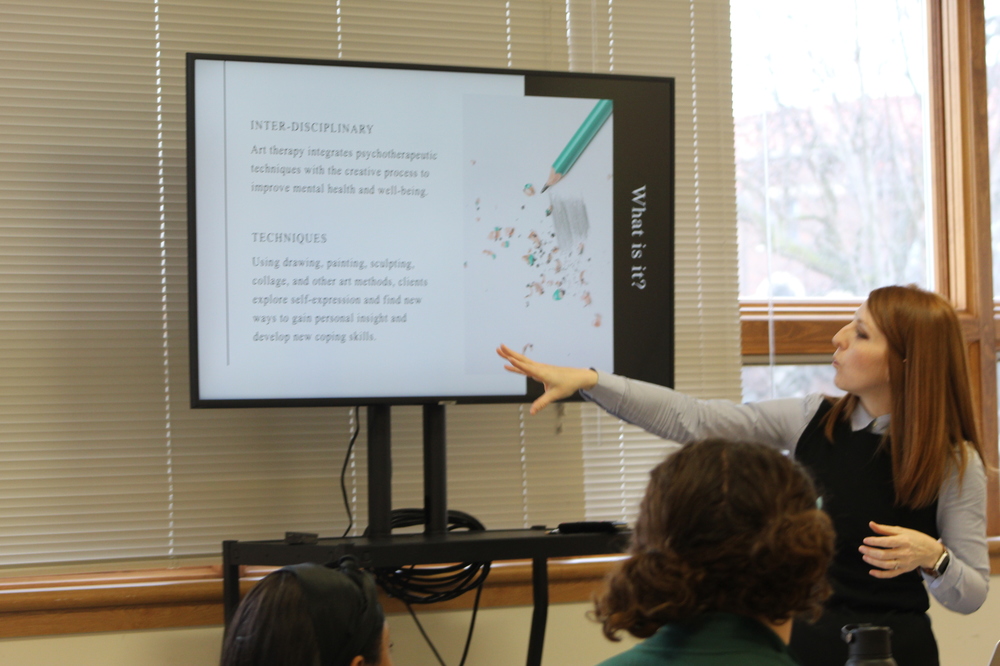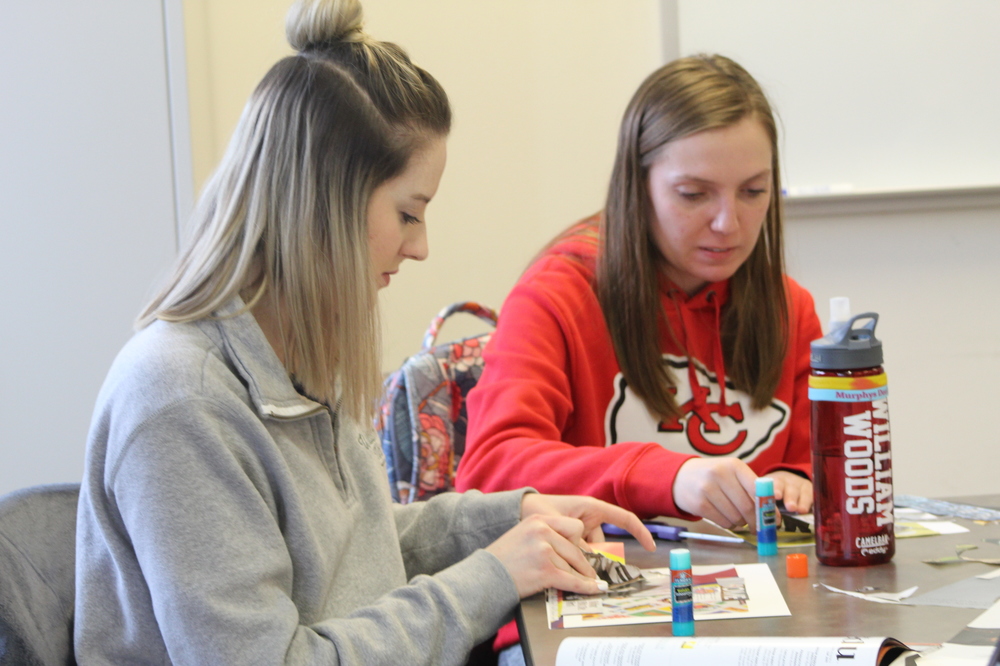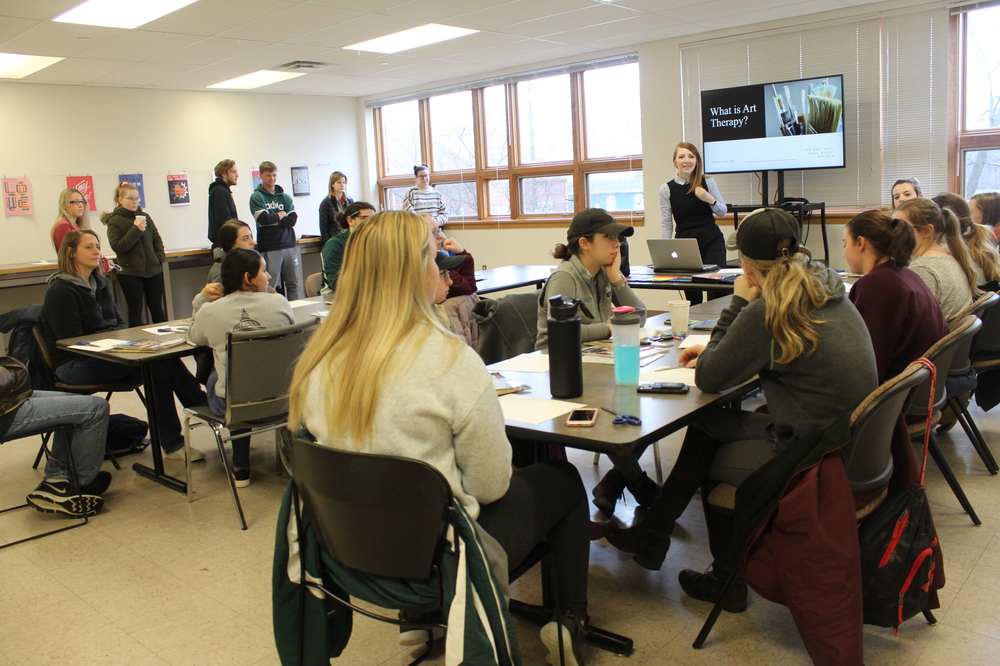After a series of LEAD events introducing the concept of art therapy over the past year, a new minor has been created as an academic option for current and incoming students for the next (2020-2021) school year.
A combination of psychology and art that utilizes art techniques to diagnose and treat psychological issues, art therapy is a very broad concept said Dr. Bethanie Irons, assistant professor in Graphic Design and director for the program.

“I am most excited to see how art therapy impacts students,” Irons said. “Being an artist for so long, I have seen the value in my own mental health through art and would love to see students embrace that more. Making art is not just making a pretty picture and making a statement to viewers. It is also about what is changing in you as an artist and what is being discovered for yourself through making art.”
The idea for the art therapy minor came when Irons was having a meeting with her mentor Dr. Elizabeth Wilson, Professor of Social Work. The two were brainstorming the possibility of doing more interdisciplinary work among the majors. Irons and Wilson saw a gap in art therapy opportunities in higher education in mid-Missouri and decided to establish a minor degree program at The Woods.
New classes created for the minor
The art therapy minor includes surface-level classes that will help students to decide if they want to pursue a masters in the field. The art department is offering two new classes: Introduction to Art Therapy and Methods of Art Therapy. Intro to Art Therapy is a lecture class that is offered in the fall and is an introduction to the field and how it relates to all the career areas like social work and psychology. Methods of Art Therapy is a project application class for the minor, which is offered in the spring.
An example of a project in Methods of Art Therapy class was forgiveness cards. Forgiveness cards are ones that will never be sent, but allow students to visually describe their thoughts to get to the root of feelings of guilt, shame or anger towards another person or themself. An example of an assignment in Introduction to Art Therapy is to do research on social media and its impact on mental health.
“Some students feel like social media is affecting their mental health,” Irons said. “Social media accelerates thoughts which can have a significant impact when you are dealing with others. In an art therapy scenario, students can work on forgiveness cards to help think through acts of forgiveness of oneself of fulfilling these feelings. You can become more aware of where feelings are coming from, along with coping mechanisms that emerge through practicing the therapeutic arts”
Art therapy LEAD event
A recent LEAD event helped to further introduce students to art therapy. Kemper 202 was filled for the event earlier this semester, where Irons presented on the basics of art therapy including some statistics on job prospects and salary ranges. Following the presentation, students were tasked with an activity related to the minor, which was collaging.

“Art therapy is not just visual art, as the therapeutic arts also include writing and music to underline issues through creative means,” Irons said. “The activity was short and required no artistic talent. This is why we are using collage because it is an easy way to start constructing imagery. Collage involves appropriating images from others into a composition. Participants are not using their own imagery and not having to worry so much about craftsmanship, so it is not as high stakes as drawing or painting.”
One of the students at the event was Jessi Butler ‘21, who learned that the art program was adding a minor and how it could help with mental health.
“I went to the event to check it out because it seemed like a fun and interesting event,” Butler said. “Art therapy is useful for helping to de-stress.”
Another student, Elizabeth Kasubke ’21, learned how to make a collage and to use the experience to help her in her future career as an elementary school teacher. Going to the event because she has been interested in art therapy, Kasubke is also thinking about getting her master’s in counseling and the event helped her consider if she wanted to explore more about the technique in the future.
“The benefit of the minor to the campus is it teaches students about positive ways to release stress,” Kasubke said. “I can also use this in real life with my students as a way to express themselves and to relieve stress.”
The new art therapy minor will be available for the 2020-2021 school year. For more information on the art program at WWU, please visit https://www.williamwoods.edu/academics/undergraduate/programs_and_degrees/art/bachelor_of_fine_arts/index.html

